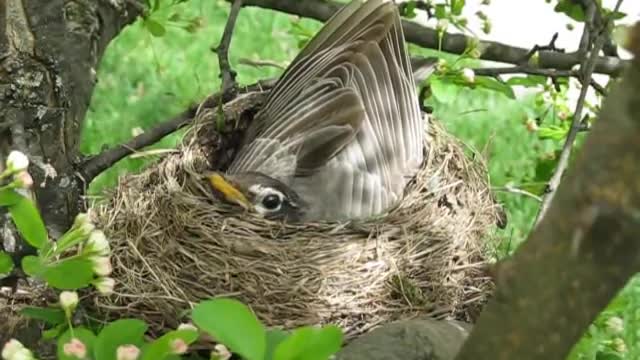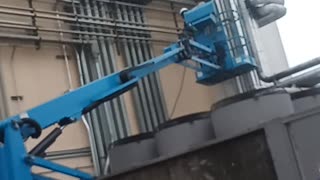Premium Only Content

Robin building a nest
House Sparrows are closely associated with people and their buildings. Look for them in cities, towns, suburbs, and farms (particularly around livestock). You won’t find them in extensive woodlands, forests, or grasslands. In extreme environments such as deserts or the far north, House Sparrows survive only in the immediate vicinity of people.
House Sparrows nest in holes of buildings and other structures such as streetlights, gas-station roofs, signs, and the overhanging fixtures that hold traffic lights. They sometimes build nests in vines climbing the walls of buildings. House Sparrows are strong competitors for nest boxes, too, at times displacing the species the nest box was intended for, such as bluebirds and Tree Swallows. House Sparrows nest in holes in trees somewhat less often.
The house sparrow is strongly associated with human habitation, and can live in urban or rural settings. Though found in widely varied habitats and climates, it typically avoids extensive woodlands, grasslands, and deserts away from human development. It feeds mostly on the seeds of grains and weeds, but it is an opportunistic eater and commonly eats insects and many other foods. Its predators include domestic cats, hawks, owls, and many other predatory birds and mammals.
Loose jumble of odds and ends, including coarse grass (with seed heads), cloth, feathers, twigs and sometimes litter (e.g., clear plastic, cigarette filters). Mid-summer nests sometimes contain bits of green vegetation (mustards or mints.) Tall nest, often with tunnel like entrance, particularly when built outside of a nestbox. In a nestbox may have more of a cup shape, and may be built up to cover sides of box.
Eggs are cream, white, gray or greenish tint, with irregular fine brown speckles, shell is smooth with slight gloss. See more photos. The background color can vary, the color of the spots can vary, the thickness of spotting can vary, and the size can vary. House Sparrow eggs are sometimes confused with Cowbird eggs, but typically there would be only one Cowbird egg, and the rest would belong to the host.
Nest sites are varied, though cavities are preferred. Nests are most frequently built in the eaves and other crevices of houses. Holes in cliffs and banks, or tree hollows, are also used. A sparrow sometimes excavates its own nests in sandy banks or rotten branches, but more frequently uses the nests of other birds such as those of swallows in banks and cliffs, and old tree cavity nests. It usually uses deserted nests, though sometimes it usurps active ones. Tree hollows are more commonly used in North America than in Europe, putting the sparrows in competition with bluebirds and other North American cavity nesters, and thereby contributing to their population declines.
-
 0:04
0:04
backyardblessings
3 years agoBluebird nest building
23 -
 0:38
0:38
Moe2025
3 years agoDuck building a nest on a pond
20 -
 0:29
0:29
ShaghAlavi
3 years agoA spectacular scene of a duck building a nest
20 -
 0:22
0:22
TacoFunBox
3 years ago $0.01 earned9 | Lightsaber Building
58 -
 0:12
0:12
Pressure washing
3 years ago $0.01 earnedCleaning building
64 -
 1:19:04
1:19:04
The Rubin Report
4 hours agoTrump & Netanyahu Shock with Truly Unexpected Plan for Gaza
83.6K109 -
 1:59:23
1:59:23
Steven Crowder
6 hours ago🔴 Trump's Hitlist Grows: USAID, Dept. of Education, CIA, and... Gaza?
444K395 -
 57:49
57:49
Grant Stinchfield
3 hours ago $3.43 earnedThe FBI Withholds 5000 Names of Agents & Employees Who Hunted Down J6'ers
18.9K14 -
 2:02:40
2:02:40
LFA TV
19 hours agoMA-GAZA STRIP! | LIVE FROM AMERICA 2.5.25 11am
66.3K17 -
 2:14:55
2:14:55
Matt Kohrs
13 hours agoBreaking Market News, Earnings Review & Live Trading $1M || The MK Show
88.9K1